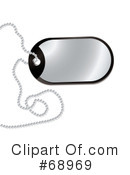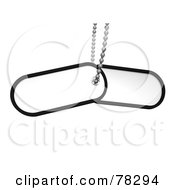Music videos use a wide range of styles of film making techniques, including animation, live action filming, documentaries, and non-narrative approaches such as abstract film. Some music videos blend different styles, such as animation and live action. Many music videos do not interpret images from the song's lyrics, making it less literal than expected.
In 1926, with the arrival of "talkies" many musical short films were produced. Vitaphone shorts (produced by Warner Bros.) featured many bands, vocalists and dancers. Spooney Melodies in 1930 was the first true musical video series.[citation needed] Shorts were typically six minutes in duration, and featured Art Deco-style animations and backgrounds combined with film of the performer singing.
Animation artist Max Fleischer introduced a series of sing-along short cartoons called Screen Songs, which invited audiences to sing along to popular songs by "following the bouncing ball", which is similar to a modern karaoke machine. The sing along concept is still used today, especially with younger audiences such as High School Musical. Early 1930s cartoons featured popular musicians performing their hit songs on-camera in live-action segments during the cartoons. The early animated films by Walt Disney, such as the Silly Symphonies shorts and especially Fantasia, which featured several interpretations of classical pieces, were built around music. The Warner Brothers cartoons, even today billed as Looney Tunes and Merrie Melodies, were initially fashioned around specific songs from upcoming Warner Brothers musical films. Warner Brothers also produced the cartoon "Three Pigs in a Polka", set to Johannes Brahms' Hungarian Dances. This film actually included many elements to the Walt Disney version of the Three Little Pigs, such as the pigs playing a violin and a piccolo. Live action musical shorts, featuring such popular performers as Cab Calloway, were also distributed to theaters.
Blues singer Bessie Smith appeared in a two-reel short film called St. Louis Blues (1929) featuring a dramatized performance of the hit song. Numerous other musicians appeared in short musical subjects during this period. Later, in the mid-1940s, musician Louis Jordan made short films for his songs, some of which were spliced together into a feature film Lookout Sister. These films were, according to music historian Donald Clarke, the "ancestors" of music video.
Another early form of music video were one-song films called "promotional clips" made in the 1940s for the Panoram visual jukebox. These were short films of musical selections, usually just a band on a movie-set bandstand, made for playing. Thousands of "soundies" were made, mostly of jazz musicians, but also of torch singers, comedians, and dancers. Before the soundie, even dramatic movies typically had a musical interval, but the soundie put the music in the forefront; virtually all known jazz performers appeared in soundie shorts. The Panoram jukebox with eight three-minute soundies were popular in taverns and night spots, but the fad faded during World War II.
Musical films were another important precursor to music video, and several well-known music videos have imitated the style of classic Hollywood musicals from the 1930s to the 1950s. One of the best-known examples is Madonna's 1985 video for "Material Girl" (directed by Mary Lambert) which was closely modelled on Jack Cole's staging of "Diamonds Are A Girl's Best Friend" from the film Gentlemen Prefer Blondes. Several of Michael Jackson's videos show the unmistakable influence of the dance sequences in classic Hollywood musicals, including the landmark "Thriller" and the Martin Scorsese-directed "Bad" which was influenced by the stylised dance "fights" in the film version of West Side Story.
In 1956, Petrushka, directed by John David Wilson for Fine Arts Films aired as a segment of the Sol Hurok Music Hour on NBC. Igor Stravinsky conducted a live orchestra for the recording of the event. In 1957, Tony Bennett was filmed walking along The Serpentine in Hyde Park, London as his recording of "Stranger in Paradise" played; this film was distributed to and played by UK and US television stations. According to the Internet Accuracy Project, disk jockey-singer J. P. "The Big Bopper" Richardson was the first to coin the phrase "music video", in 1959. It is no coincidence that the rise of popular music was tied with the rise of television, as the format allowed for many new stars to be exposed that previously would have been passed over by Hollywood, which normally required proven acts in order to attract an audience to the box office. In the late 1950s the Scopitone, a visual jukebox, was invented in France and short films were produced by many French artists, such as Serge Gainsbourg, Françoise Hardy, Jacques Brel, and Jacques Dutronc to accompany their songs. Its use spread to other countries and similar machines such as the Cinebox in Italy and Color-Sonic in the USA were patented. In 1961 Ozzie Nelson directed and edited the video of "Travelin' Man" by his son Ricky Nelson. It featured images of various parts of the world mentioned in the Jerry Fuller song along with Nelson's vocals. In 1964, Kenneth Anger's experimental short film, Scorpio Rising used popular songs instead of dialog. In 1961, for Canadian show Singalong Jubilee, Manny Pittson began pre-recording the music audio, went on-location and taped various visuals with the musicians lip-syncing, then edited the audio and video together. Most music numbers were taped in-studio on stage, and the location shoot "videos" were to add variety. In 1963, singer Kyu Sakamoto is featured on the Japanese television program Shall We Meet At Seven? singing eight of his best-known songs, including his international hit Sukiyaki. Sakamoto is shown singing the latter as he walks through an alley past barrels.
In 1926, with the arrival of "talkies" many musical short films were produced. Vitaphone shorts (produced by Warner Bros.) featured many bands, vocalists and dancers. Spooney Melodies in 1930 was the first true musical video series.[citation needed] Shorts were typically six minutes in duration, and featured Art Deco-style animations and backgrounds combined with film of the performer singing.
Animation artist Max Fleischer introduced a series of sing-along short cartoons called Screen Songs, which invited audiences to sing along to popular songs by "following the bouncing ball", which is similar to a modern karaoke machine. The sing along concept is still used today, especially with younger audiences such as High School Musical. Early 1930s cartoons featured popular musicians performing their hit songs on-camera in live-action segments during the cartoons. The early animated films by Walt Disney, such as the Silly Symphonies shorts and especially Fantasia, which featured several interpretations of classical pieces, were built around music. The Warner Brothers cartoons, even today billed as Looney Tunes and Merrie Melodies, were initially fashioned around specific songs from upcoming Warner Brothers musical films. Warner Brothers also produced the cartoon "Three Pigs in a Polka", set to Johannes Brahms' Hungarian Dances. This film actually included many elements to the Walt Disney version of the Three Little Pigs, such as the pigs playing a violin and a piccolo. Live action musical shorts, featuring such popular performers as Cab Calloway, were also distributed to theaters.
 dog-tags |  Dog Tags Clip Art |  Dog tags |  Military Dog Tags Laying Down |  Dog Tags Clip Art |
 Military Dog Tags Hanging |  Royalty-Free (RF) Clipart |  US Army Dog Tag on white |  A Pair of Dog Tags that You |  Dog Tag Clipart #68976 by |
Musical films were another important precursor to music video, and several well-known music videos have imitated the style of classic Hollywood musicals from the 1930s to the 1950s. One of the best-known examples is Madonna's 1985 video for "Material Girl" (directed by Mary Lambert) which was closely modelled on Jack Cole's staging of "Diamonds Are A Girl's Best Friend" from the film Gentlemen Prefer Blondes. Several of Michael Jackson's videos show the unmistakable influence of the dance sequences in classic Hollywood musicals, including the landmark "Thriller" and the Martin Scorsese-directed "Bad" which was influenced by the stylised dance "fights" in the film version of West Side Story.
 Gilded Dog Tags 3D |  Illustration of leather dog |  Sterling Silver Dog Tag | _5.svg.med.png) (RF) Dog Tag Clipart |  Dog Simple Drawing Clip Art |
 dog tag |  SELECT YOUR FAVORITE DOG TAG |  Dog Tags clip art |  FoxValleyTroops |  Mid length blonde hair was cut |
No comments:
Post a Comment